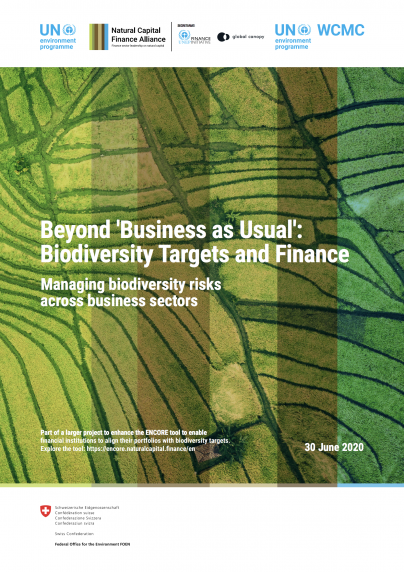A June 2020 United Nations Environment Program (UNEP) report ‘Beyond Business As Usual – Biodiversity Targets & Finance – Managing Biodiversity Risks Across Business Sectors’ has warned that if businesses did not heed to the growing threat of loss of ecosystem services, they will pay a big price soon.
The report notes how the world’s ecosystems have declined in size and condition by 47% globally compared to estimated baselines, and the continued degradation of ecosystem services represents an annual loss of at least US$479 billion per year. With recent estimates stating that more than half of the world’s total Gross Domestic Product is moderately or highly dependent on ecosystem services, these declines in biodiversity are a signal that action needs to be taken to strengthen the global economy’s resilience.
Financial institutions are exposed to multiple types of biodiversity-related risk through their various activities, including risk of default by clients, lower returns from investees, and increasing insurance liabilities due to environmental catastrophes. Working with their client and/or customer bases and investees, financial institutions can turn these risks into opportunities by mitigating impacts on and managing investments in biodiversity in a sustainable way.
To achieve international goals to safeguard biodiversity, all actors across society need to set targets to drive action towards halting and ideally reversing current rates of biodiversity loss. Financial institutions have a key role to play as they can catalyze behavior changes and influencing economic pathways, business models and practices. Individual institutions can do so by setting targets for reducing biodiversity impacts of the companies they lend to or invest in.
This report aims to enable a better understanding of the business sectors1 and financial mechanisms at risk from the loss of biodiversity and lay the groundwork for biodiversity-related target-setting by the finance sector. It sets out an initial approach to enable financial institutions to set evidence-based biodiversity targets aligned with international policy developments. The approach detailed in this report combines information from scientific literature and key authoritative sources, as well as the knowledge base on the impacts and dependencies of sectors on nature developed for the ENCORE tool (Exploring Natural Capital Opportunities, Risks and Exposure), to identify a set of priority sectors for biodiversity-related target setting.








